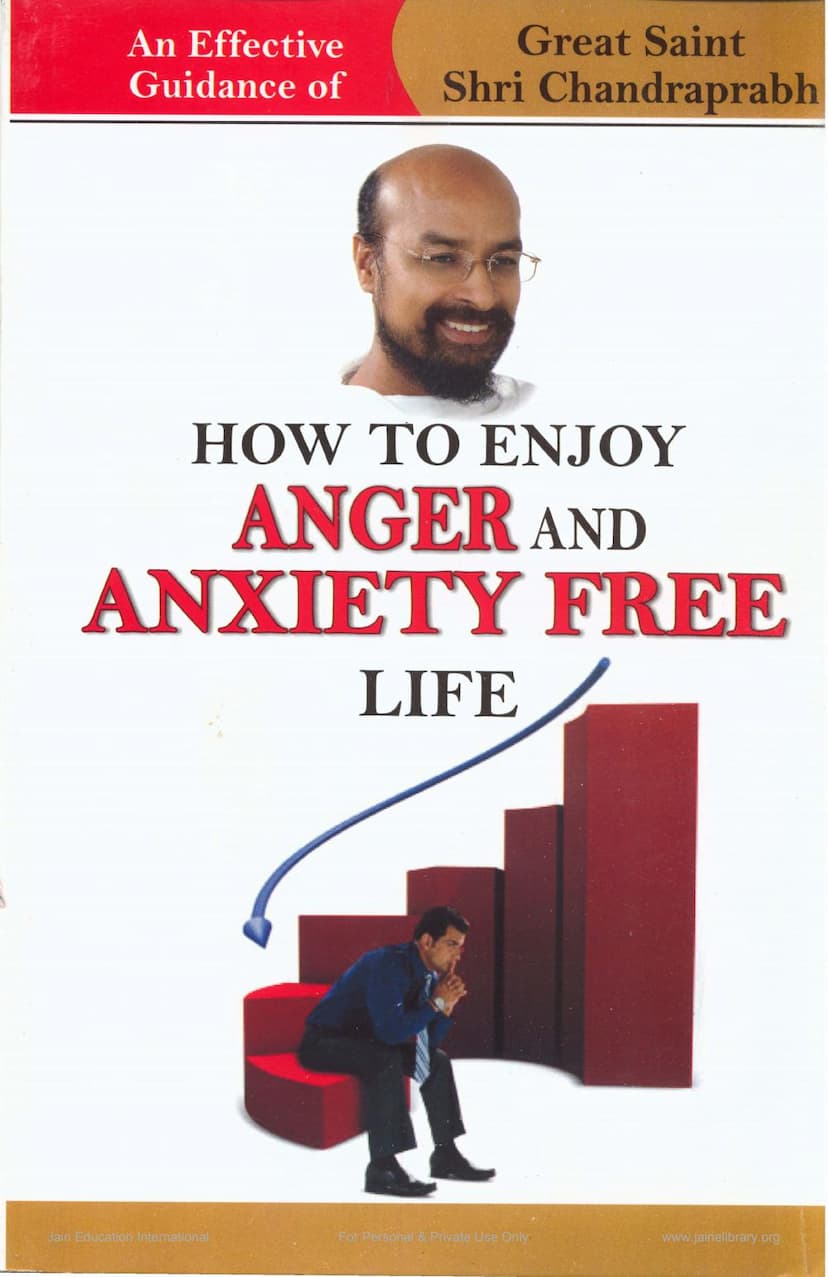How To Enjoy Anger And Anxiety Free Life
Added to library: September 1, 2025

Summary
The book "How to Enjoy Anger and Anxiety Free Life" by Saint Shri Chandraprabh, translated by Hemraj Sharma and published by Shri Jitayasha Foundation in January 2013, offers guidance on living a life free from the detrimental effects of anger and anxiety.
Core Message:
The central theme of the book is that anger and anxiety are significant enemies of human well-being, negatively impacting health, relationships, careers, and overall happiness. The teachings emphasize that individuals are responsible for their own emotional states and that creating happiness and peace is achievable on Earth, not solely in the afterlife. The book advocates for cultivating love, affinity, peace, respect, and positive thinking to overcome these destructive emotions.
Key Concepts and Chapters:
The book is structured into several chapters, each focusing on a different aspect of achieving an anger and anxiety-free life:
-
How to Live Anger and Anxiety Free Life: This chapter identifies anger and anxiety as major life enemies that disrupt peace, health, and relationships. It highlights how anxiety is a constant cycle of worries and affects mental and physical health, while anger destroys wisdom and relationships. The key is to master the present and not dwell on the past or worry excessively about the future. Trust in a higher power and accepting life's uncertainties are presented as ways to reduce anxiety.
-
How to Control Over Anger: Anger is described as life's biggest enemy, destroying peace, success, and health. It emphasizes that anger arises from ignorance and ego, leading to violence and negative consequences. The text uses anecdotes, including the story of Lord Mahavira and the serpent Chandkaushik, to illustrate the devastating effects of anger, even on spiritual beings. It promotes patience, forgiveness, and controlling one's reactions, comparing anger to a destructive force that can be managed with self-discipline and positive behavior. The importance of a "sorry" attitude and simple, polite communication is also stressed.
-
How to Adopt Peace in Life: Peace is presented as the most precious formula for a happy life. The book argues that peace of mind is more valuable than money or possessions, and it is the true source of heavenly pleasure. It advises finding contentment in what one has, adjusting to life's changes, and letting go of disturbances to peace. The teachings emphasize simplicity, positivity, and living in harmony with nature's arrangements. The concept of "flower bed culture" over "flower pot culture" illustrates the importance of collective family unity.
-
How to Improve Behaviour: Behavior is highlighted as the index of one's personality. Good behavior fosters positive relationships and societal respect. The book uses the story of a blind man recognizing identities by their behavior and speech to illustrate the impact of manners. It stresses politeness, humility, and a smiling disposition, even towards enemies. The importance of values and merits over physical attributes is emphasized, along with practicing good manners, respecting elders, and avoiding negative traits.
-
How to Look After the Children: This chapter emphasizes the crucial role of childhood in shaping a person's life. It encourages parents to instill good values, character, and discipline in their children from a young age. The book contrasts the rapid learning and forgiving nature of children with the prolonged grudges of adults. It highlights the influence of parents' behavior on children and stresses the importance of providing a positive family environment. The importance of education alongside moral values is underscored.
-
How to Make a Family Happy: The family is described as the foundational pillar of life, and true heaven is found in a happy family environment. The book promotes love, affection, mutual respect, and cooperation among family members. It emphasizes the importance of parents' blessings, unity among siblings, and caring for elders. The teachings draw parallels with epic characters like Lord Rama and Lakshman to illustrate ideal family conduct. Cleanliness, cooperation, and staying free from addictions are presented as key components of a happy family.
-
Balanced Diet: A Source of Positive Health: This final chapter focuses on the critical link between diet and health. It advocates for a simple, pure, vegetarian diet and emphasizes balanced eating habits. The book highlights the detrimental effects of unhealthy and imbalanced diets on physical and mental well-being. It promotes the practice of yoga, pranayama, and meditation for holistic health and advises against fast food and excessive consumption. The purity of food is linked to the purity of conduct and thoughts, drawing examples from Jain traditions.
In essence, "How to Enjoy Anger and Anxiety Free Life" is a spiritual and practical guide, rooted in Jain principles, that empowers individuals to transform their lives by cultivating inner peace, controlling negative emotions, fostering positive relationships, and living a balanced and virtuous life.